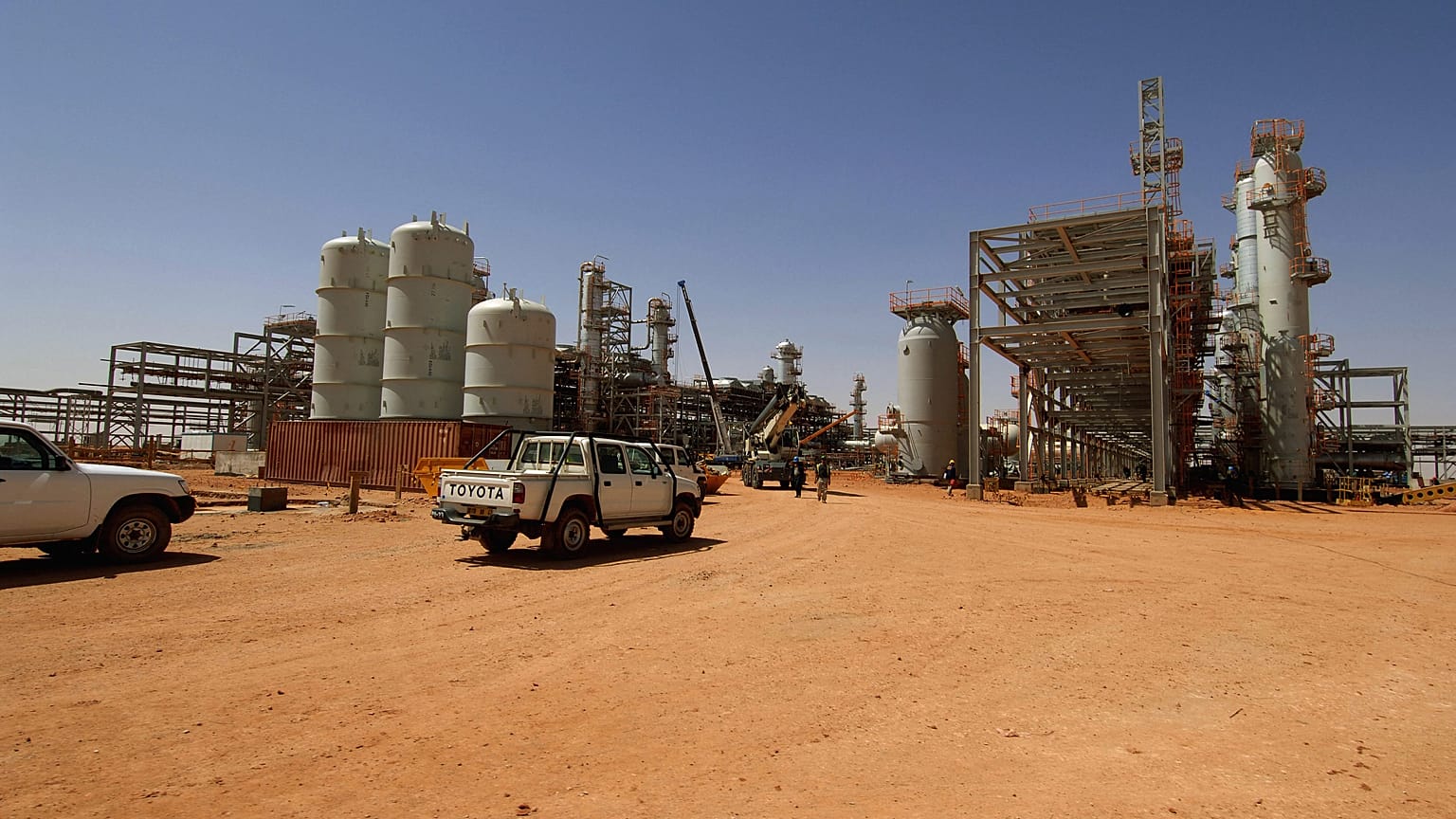The continent is largely reliant on imports of gas to meet its energy needs.
The energy crisis exacerbated by tensions with Moscow is pushing Europe to look elsewhere for more natural gas.
It's not just a problem of finding more countries to supply the gas, but also a question of how to get the gas to member states.
Europe depends on imports for its natural gas supply, and this can only arrive through two routes: either through pipelines that guarantee the security of supply at a lower cost or through liquefied natural gas carriers which allow purchase in a global market but at a higher cost.
Russia has historically been the largest supplier of natural gas to the EU.
After the Russia-Ukraine-Europe gas disputes of 2006 and 2009, followed by tensions in the wake of the Ukrainian crisis of 2013-2014, the European Union sought to reduce its dependence on Russian natural gas imports.
However, Russia still supplies around 40% of the bloc's gas consumption.
Europe enters winter with unusually low gas reserves
Europe has entered the winter with unusually low gas reserves and according to Simone Tagliapietra, a researcher at the Brussels-based think tank Bruegel, the situation is extremely difficult because there is not much of a choice.
"North African countries currently supply natural gas to Europe via pipelines (Algeria and Libya) but do not have the technical capacity to increase their production and exports," Tagliapietra told Euronews. "So, Europe cannot rely on them to obtain additional supplies to replace Russian gas.
"[West] African LNG...could play a role, but again this will depend on how quickly these countries can increase their production and liquefaction capacity. In all cases, it is difficult to see additional volumes available for Europe in the short term."
Italy and Spain are still looking for ways to increase their imports from Libya and Algeria and to see how to send it to the rest of Europe.
Increasing imports from Italy?
Brussels hopes the Trans Adriatic Pipeline (TAP) will increase gas imports to Europe from Azerbaijan. TAP should increase its export capacity to 10 billion cubic metres (bcm) a year from about 8 bcm at present.
This pipeline transported more than 8.1 billion cubic metres of gas from Azerbaijan to Europe last year, of which a total of 6.8 bcm was transported to Italy. This is the final stage of a $40 billion project called the Southern Gas Corridor. Last year, the country exported 19 bcm of gas, of which 8.5 bcm went to Turkey. The rest was shipped to Italy, Georgia, Greece, and Bulgaria.
The EU is currently working on another project: EastMed, a pipeline that will connect the European network to the offshore gas fields discovered in Cyprus, Israel, and Egypt. If completed, it would bypass Russia and Turkey by connecting the Cypriot network to the European network.
Work on EastMed is expected to be completed in 2027, as is work on Poseidon, the pipeline that will connect to EastMed from Greece to Italy.
Since 2004, Greenstream, the 520 km long pipeline from Libya to Gela, has been in operation. It is the longest pipeline in the Mediterranean Sea and reaches a depth of almost 1,200 m
In addition to Greenstream, there is also the 2,000 km Transmed pipeline from Africa, which connects Algeria to Italy via Tunisia to Mazara del Vallo in Sicily. Today, Algeria is Italy’s second-largest gas exporter, right after Russia.
A new pipeline to bring gas to Europe from Spain?
Almost 45% of the gas that Spain imports and consumes comes from Algeria. Of the two existing pipelines from Algeria, the largest is the Maghreb-Europe pipeline, which transports an annual average of 10,000 million cubic metres (mcm) to the Iberian Peninsula.
The second one is the Medgaz undersea pipeline, which reaches Almería and was put into operation in 2010 to improve the security of supply in Spain and the rest of Europe.
The energy multinational Naturgy and its Algerian ally Sonatrach agreed in July to start up its expansion, in which they have invested some €73 million. Pressure tests have already been carried out but it hasn't yet been started up.
Medgaz is the first pipeline to run at a depth of more than 2 km in the Mediterranean and has an initial capacity of 8,000 mcm per year. When its capacity is expanded, it is expected that 25% of the natural gas consumed in Spain will come through this pipeline.
NATO will be also evaluating the possibility of building a gas pipeline that would supply Algerian gas and liquefied gas to the European market “to alleviate central Europe's dependence on Russian gas”, Catalan newspaper La Vanguardia reported, citing sources from the Spanish government.
According to the Spanish newspaper, it would be the Midcat project, cancelled in 2019 by the Spanish and French authorities due to its low profitability due to the growing preference for renewable energies. If the project, then valued at €400 million ($457 million), goes ahead, the Iberian peninsula could become a "distribution platform" and store gas in eight regasification plants located in Spain and Portugal.
Can the use of liquid gas be an alternative to no gas?
Although Spain has the best infrastructure for the exploitation of liquid gas, the situation could degenerate there too.
"Enagás, technical manager of the gas system in Spain, said that in November 2021, 95% of the capacity offered in regasification plants, the legal maximum possible, was contracted, compared to 57% in November 2020," José María Yusta, a specialist in energy markets at Zaragoza University told Euronews.
With Spain close to its maximum capacity in liquified gas storage, it does not yet seem to be a solution capable of solving Europe's energy crisis.















